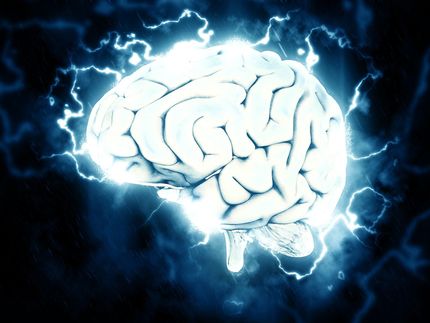First mouse model for ALS dementia
Now scientists can directly view drugs' effect on brain
The first animal model for ALS dementia, a form of ALS that also damages the brain, has been developed by Northwestern Medicine® scientists. The advance will allow researchers to directly see the brains of living mice, under anesthesia, at the microscopic level. This will allow direct monitoring of test drugs to determine if they work.
This is one of the latest research findings since the ALS Ice Bucket Challenge heightened interest in the disease and the need for expanded research and funding.
"This new model will allow rapid testing and direct monitoring of drugs in real time," said Northwestern scientist and study senior author Teepu Siddique, M.D. "This will allow scientists to move quickly and accelerate the testing of drug therapies."
The new mouse model has the pathological hallmarks of the disease in humans with mutations in the genes for UBQLN2 (ubliqulin 2) and SQSTM1 (P62) that Siddique and colleagues identified in 2011. That pathology was linked to all forms of ALS and ALS/dementia.
Siddique and Han-Xiang Deng, M.D., the corresponding authors on the paper, said they have reproduced behavioral, neurophysiological and pathological changes in a mouse that mimic this form of dementia associated with ALS (amyotrophic lateral sclerosis).
Siddique is the Les Turner ALS Foundation/Herbert C. Wenske Professor of neurology at Northwestern University Feinberg School of Medicine and a neurologist at Northwestern Memorial Hospital. Deng is a research professor in neurology at Feinberg.
The study was published Sept. 22 in the Proceedings of the National Academy of Sciences.
It's been difficult for scientists to reproduce the genetic mutations of ALS, especially ALS/dementia in animal models, Siddique noted, which has hampered drug therapy testing.
Five percent or more of ALS cases, also known as Lou Gehrig's Disease, also have ALS/dementia.
"ALS with dementia is an even more vicious disease than ALS alone because it attacks the brain causing changes in behavior and language well as paralysis," Siddique said.
ALS affects an estimated 350,000 people worldwide, with an average survival of three years. In this progressive neurological disorder, the degeneration of neurons leads to muscle weakness and impaired speaking, swallowing and breathing, eventually causing paralysis and death. The associated dementia affects behavior and may affect decision-making, judgment, insight and language.
Most read news
Organizations
Other news from the department science

Get the life science industry in your inbox
By submitting this form you agree that LUMITOS AG will send you the newsletter(s) selected above by email. Your data will not be passed on to third parties. Your data will be stored and processed in accordance with our data protection regulations. LUMITOS may contact you by email for the purpose of advertising or market and opinion surveys. You can revoke your consent at any time without giving reasons to LUMITOS AG, Ernst-Augustin-Str. 2, 12489 Berlin, Germany or by e-mail at revoke@lumitos.com with effect for the future. In addition, each email contains a link to unsubscribe from the corresponding newsletter.






















































